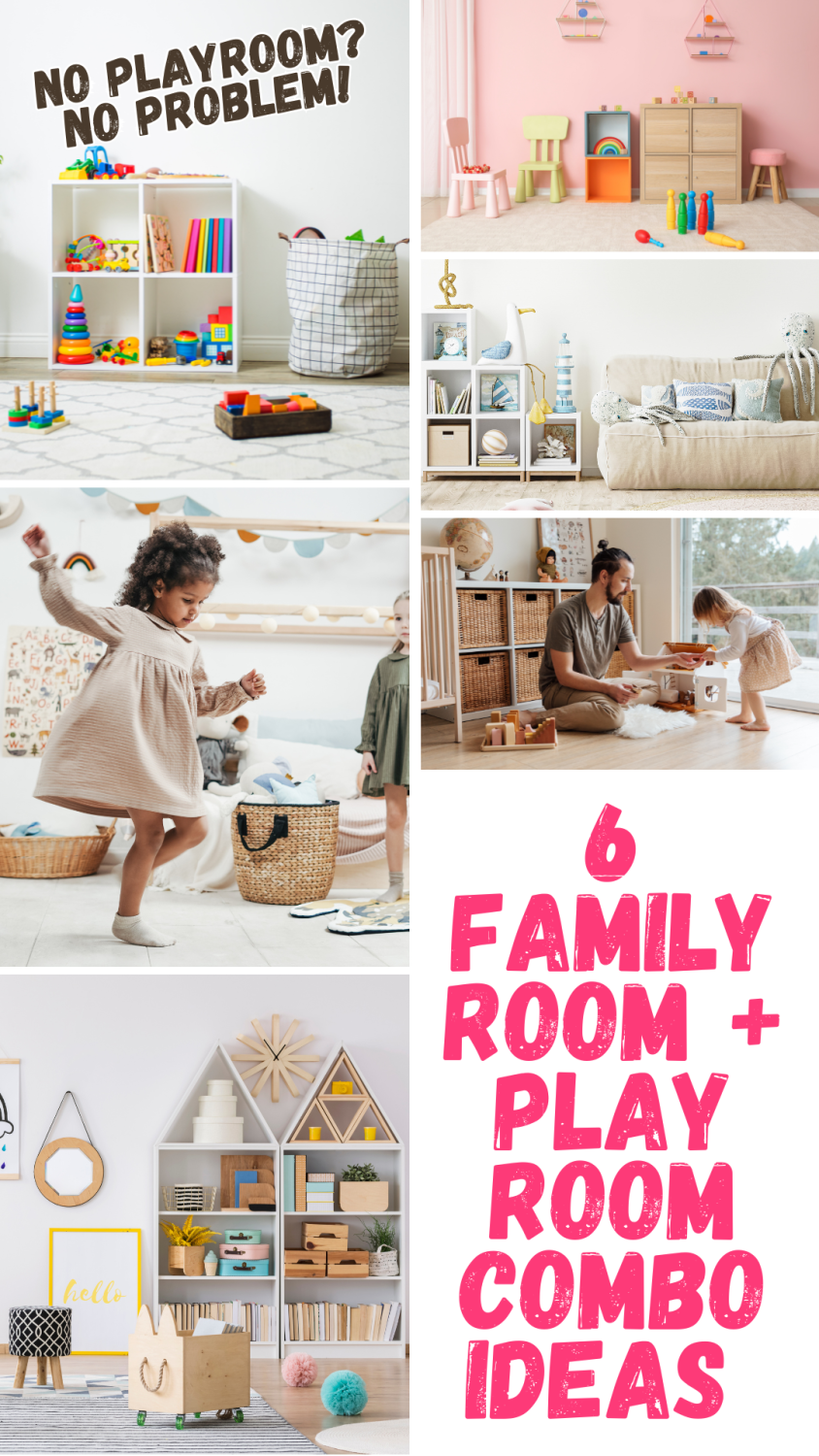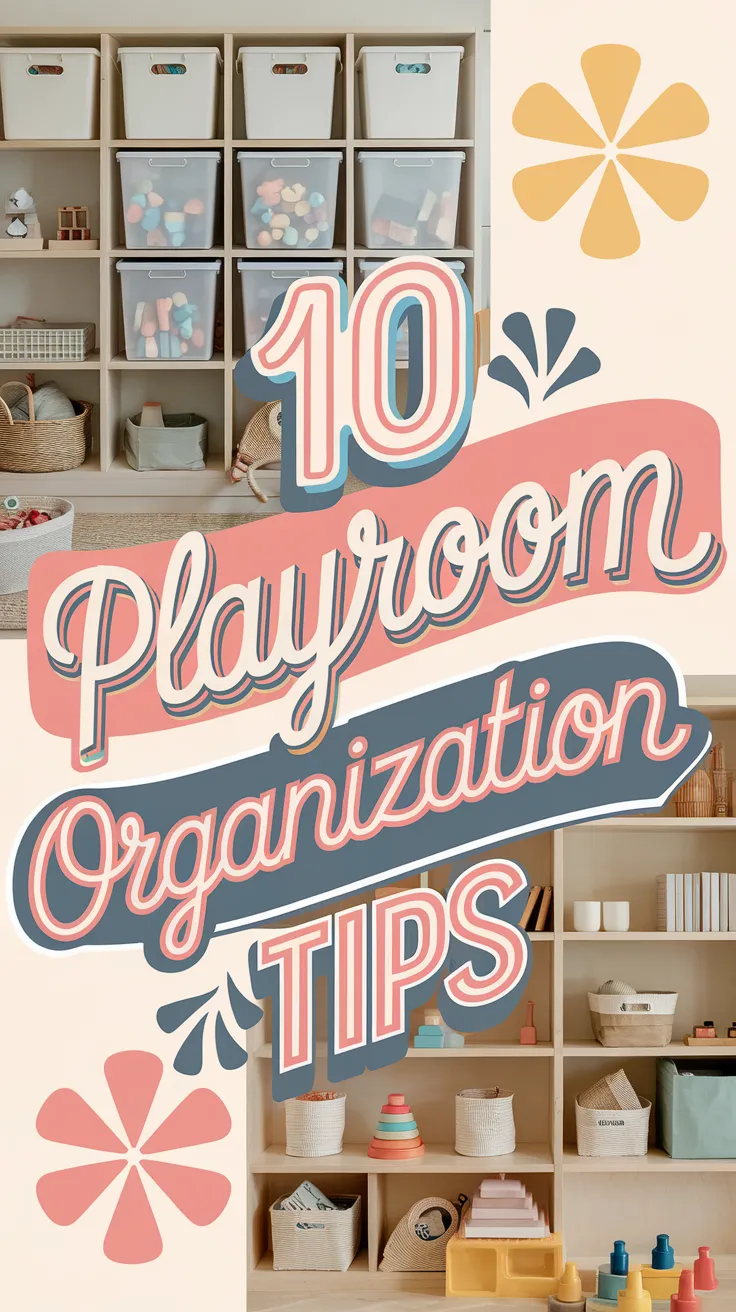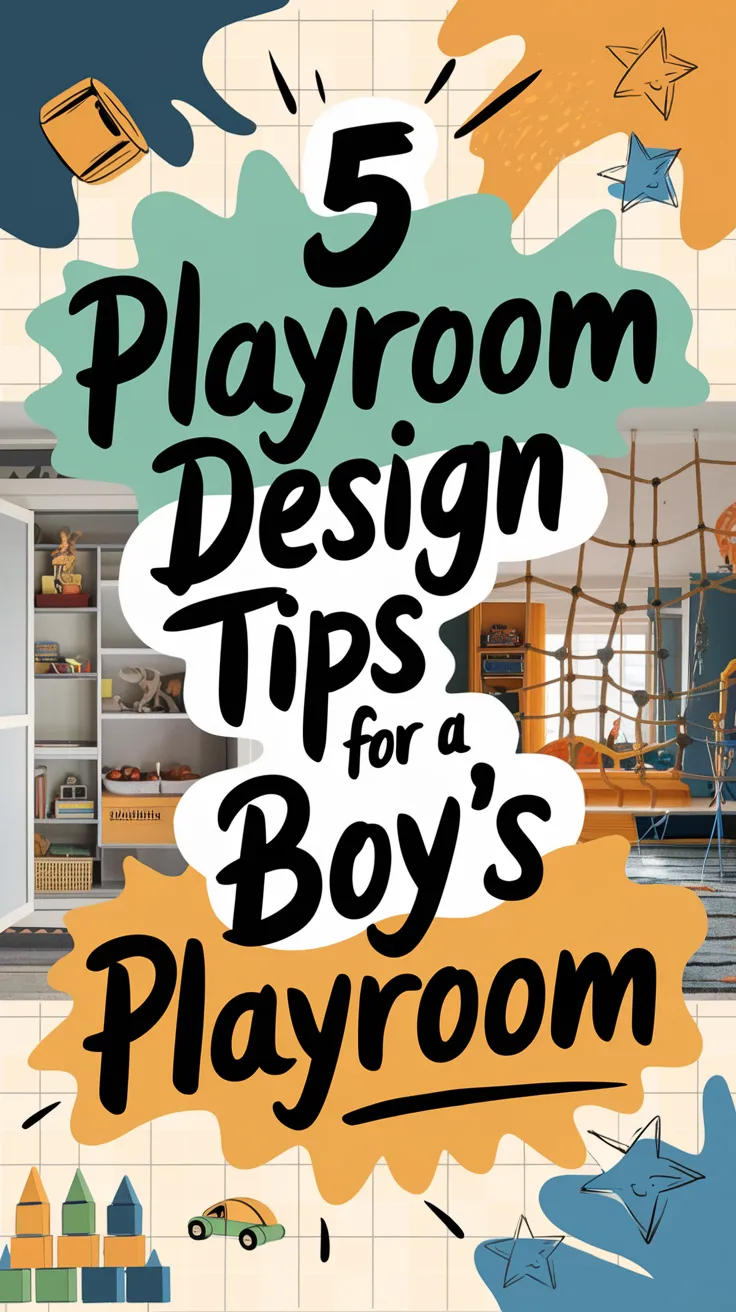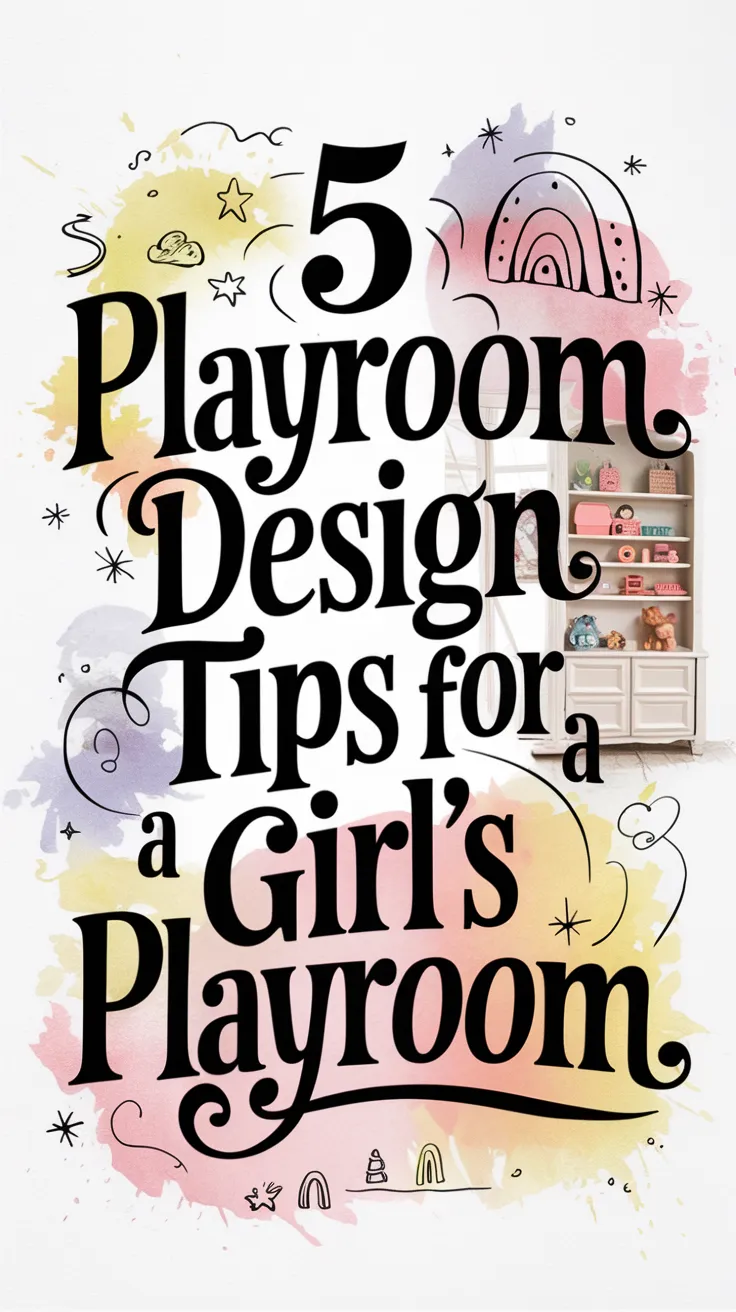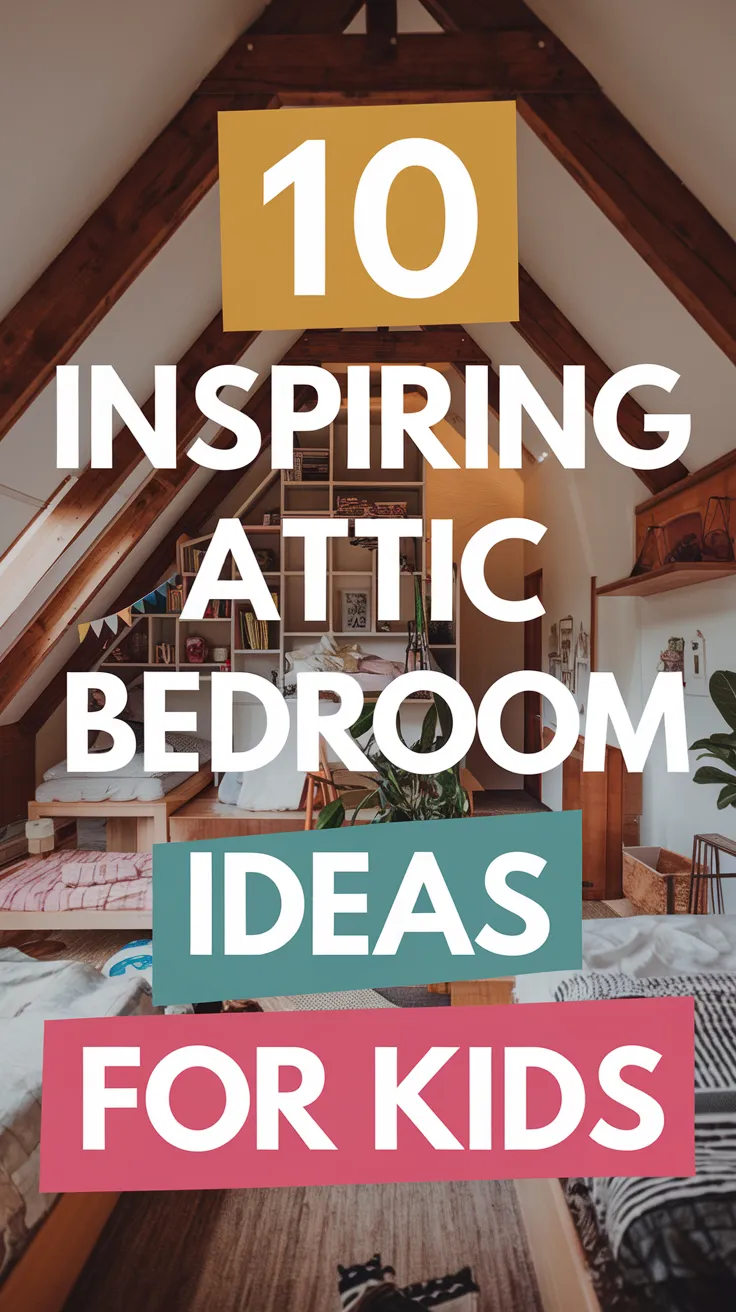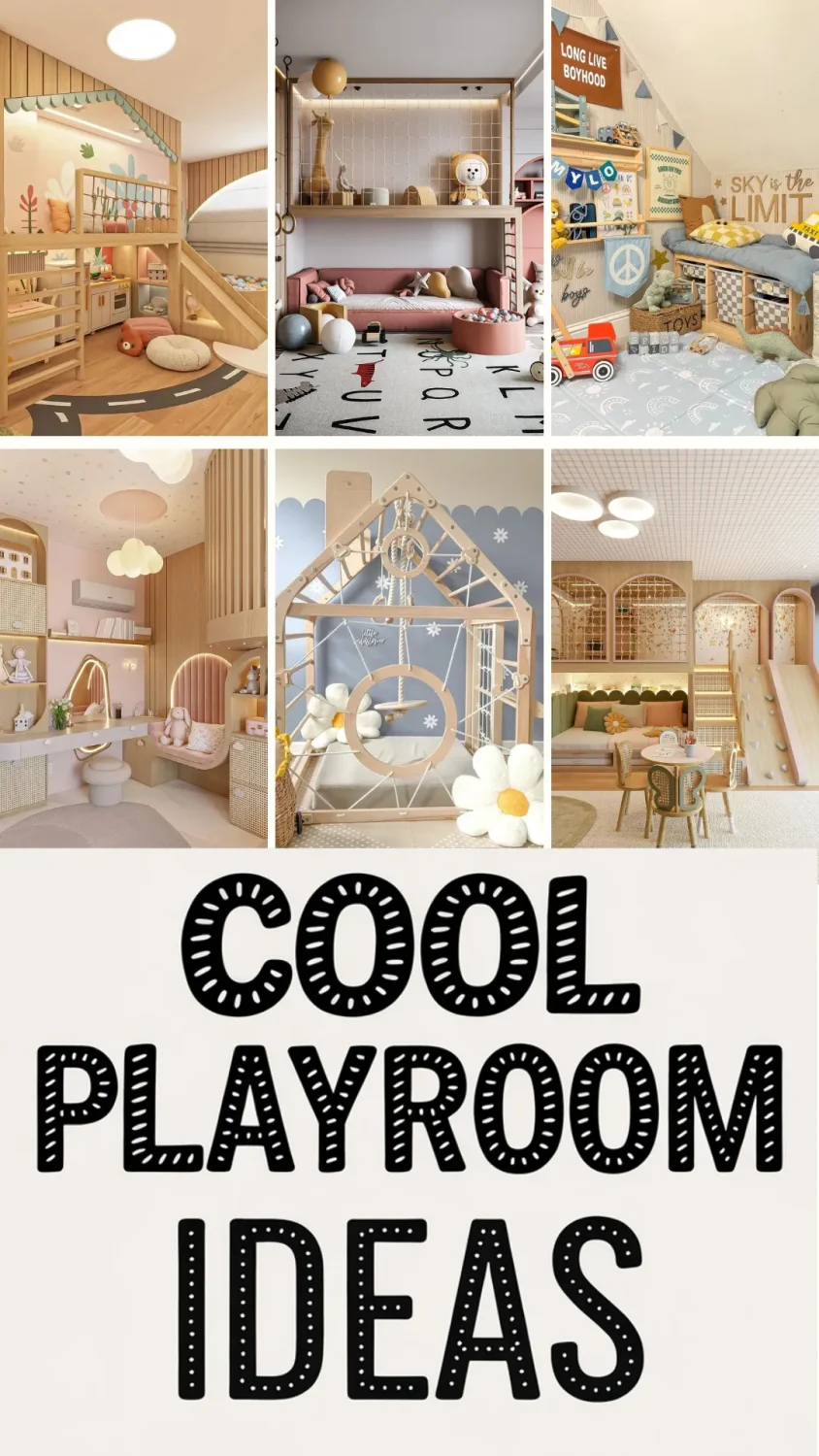This post may contain affiliate links. As an Amazon Associate I earn from qualifying purchases. If you click and buy, I may receive a small commission at no extra cost to you. Read our Disclosure Policy
Not everyone has a spare room to dedicate to a playroom, but that doesn’t mean your toddler can’t have their own special space for play. With a little creativity, you can carve out a fun and functional play area right inside your existing rooms—without letting toys completely take over your home.
From cozy corners to clever storage solutions, here are some of the best shared spaces to turn into a mini playroom, even in a small home.
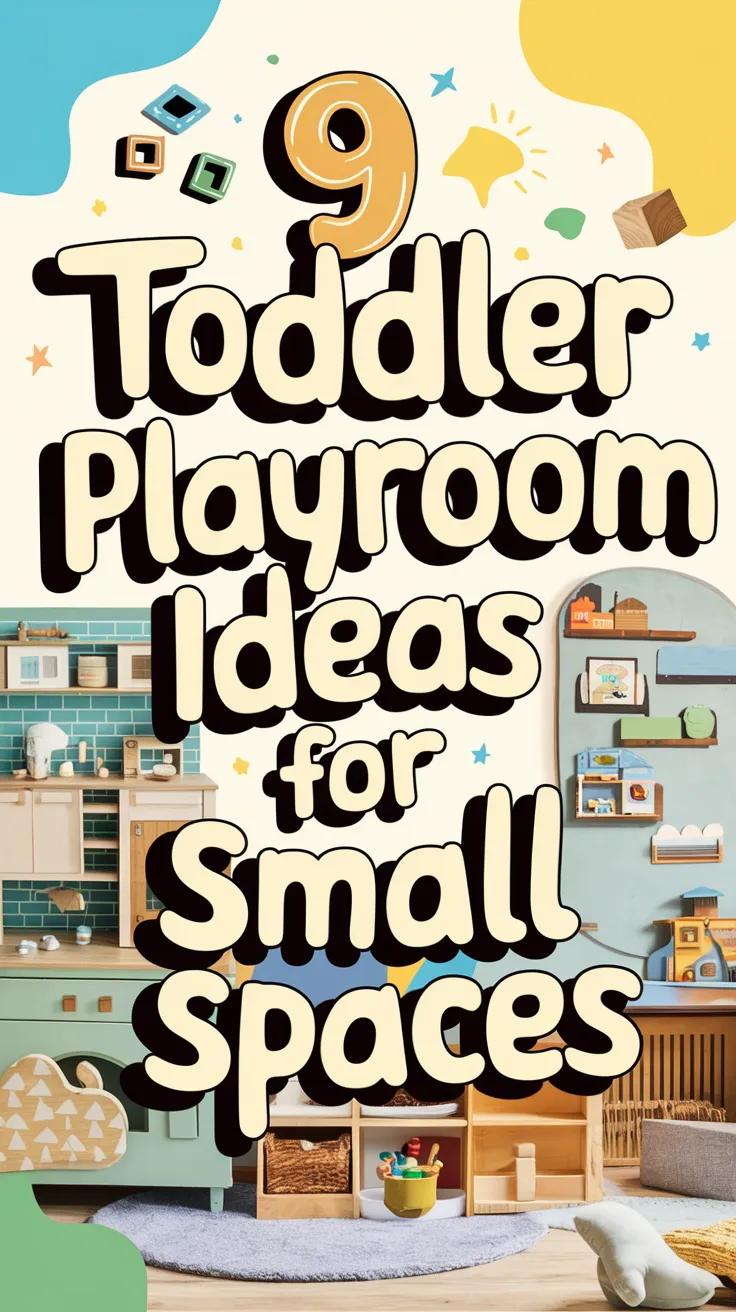
1. The Living Room Corner
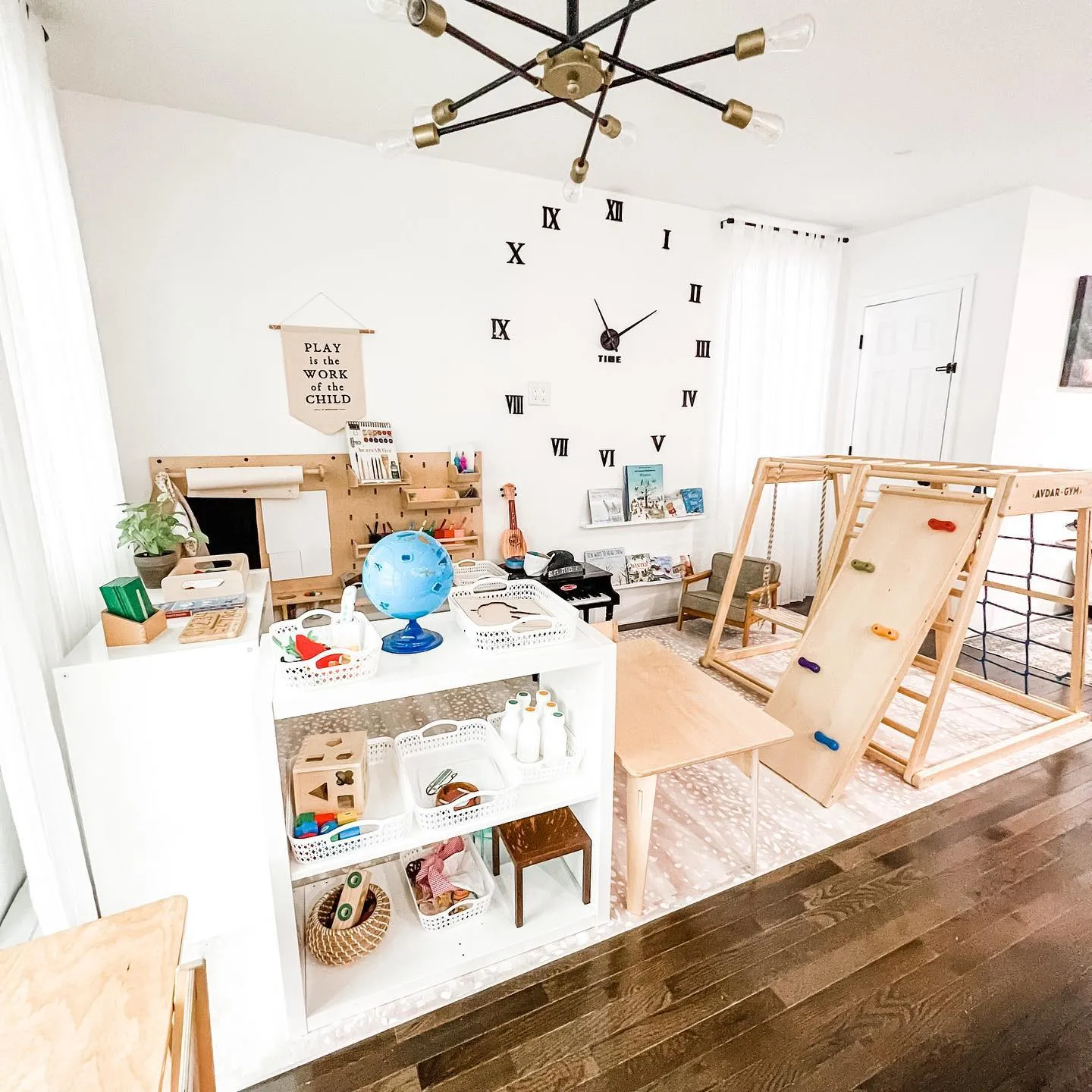
For most families, the living room is already the heart of the home—so why not make a little space for playtime, too? A dedicated play area in the living room keeps your toddler close while allowing them to explore and create. The key is to keep things organized and stylish so the space blends in rather than feeling like a toy explosion.
How to set it up:
- Use a small play rug to define the play area and create a visual boundary.
- Choose furniture that doubles as storage—an ottoman with hidden compartments, a coffee table with baskets underneath, or a stylish toy chest that fits the room’s aesthetic.
- Keep toys neatly stored in baskets or low shelving so your toddler can reach them, but they don’t take over the space.
- If your little one loves arts and crafts, a small activity table with a rolling cart for supplies can be a great addition.
Pro tip: Stick to a neutral or cohesive color palette for playroom storage so it blends seamlessly with your living room decor. If you want to keep things extra tidy, try rotating toys so only a few are out at a time—less mess, more excitement when “new” toys appear!
2. Under the Stairs
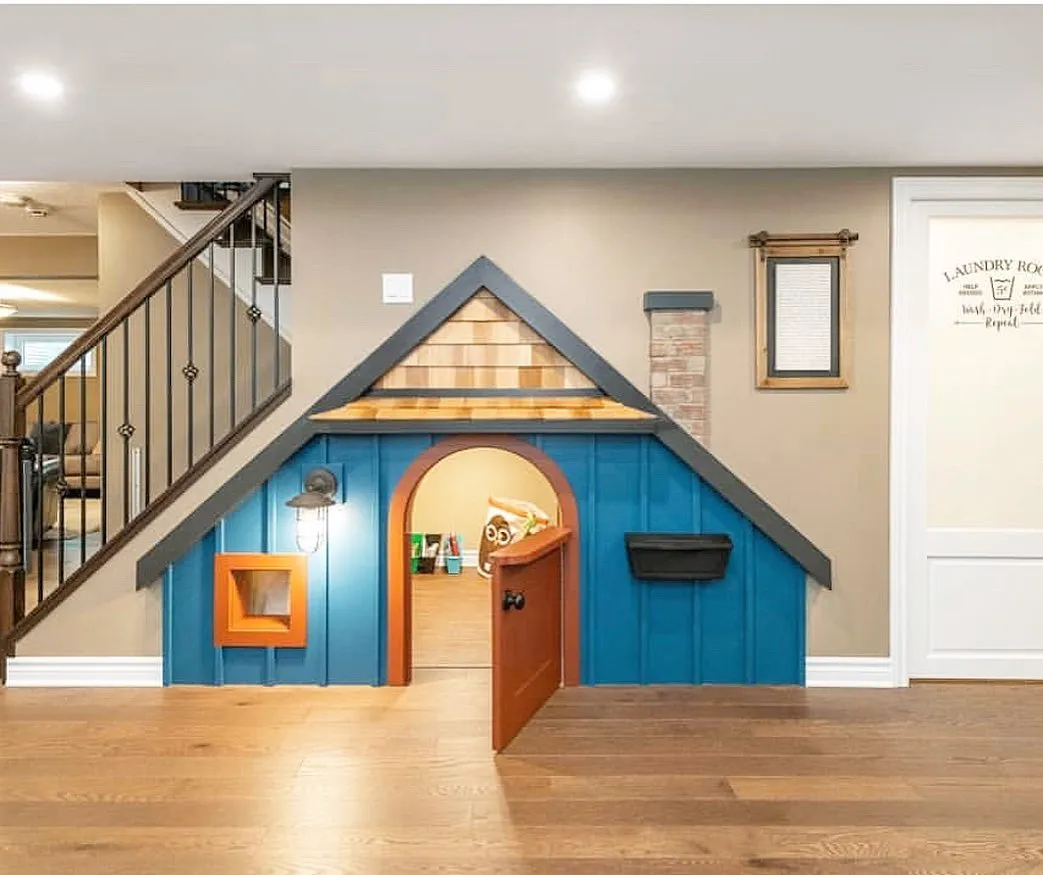
If you have an open space under your stairs, you’re sitting on an untapped goldmine for a cozy toddler playroom. This often-overlooked area is perfect for creating a magical little nook where your toddler can read, imagine, and play. Even if the space is small, with a few creative touches, it can become a favorite hideaway.
How to set it up:
- Clear out any clutter and give the space a fresh coat of paint or peel-and-stick wallpaper to make it feel inviting.
- Install floating shelves or a small bookcase for toys, books, and play essentials.
- Add a soft play mat, bean bags, or floor cushions to create a cozy reading corner.
- For a fun touch, hang fairy lights or battery-operated LED string lights to make the space feel magical.
- If your toddler loves pretend play, consider adding a play kitchen, a small table for tea parties, or a mini dress-up station with hooks for costumes.
Pro tip: Since under-the-stairs spaces can sometimes feel dark, add extra lighting to brighten up the area. A battery-powered wall sconce or motion-activated LED light strips can make a big difference!
3. A Section of the Bedroom
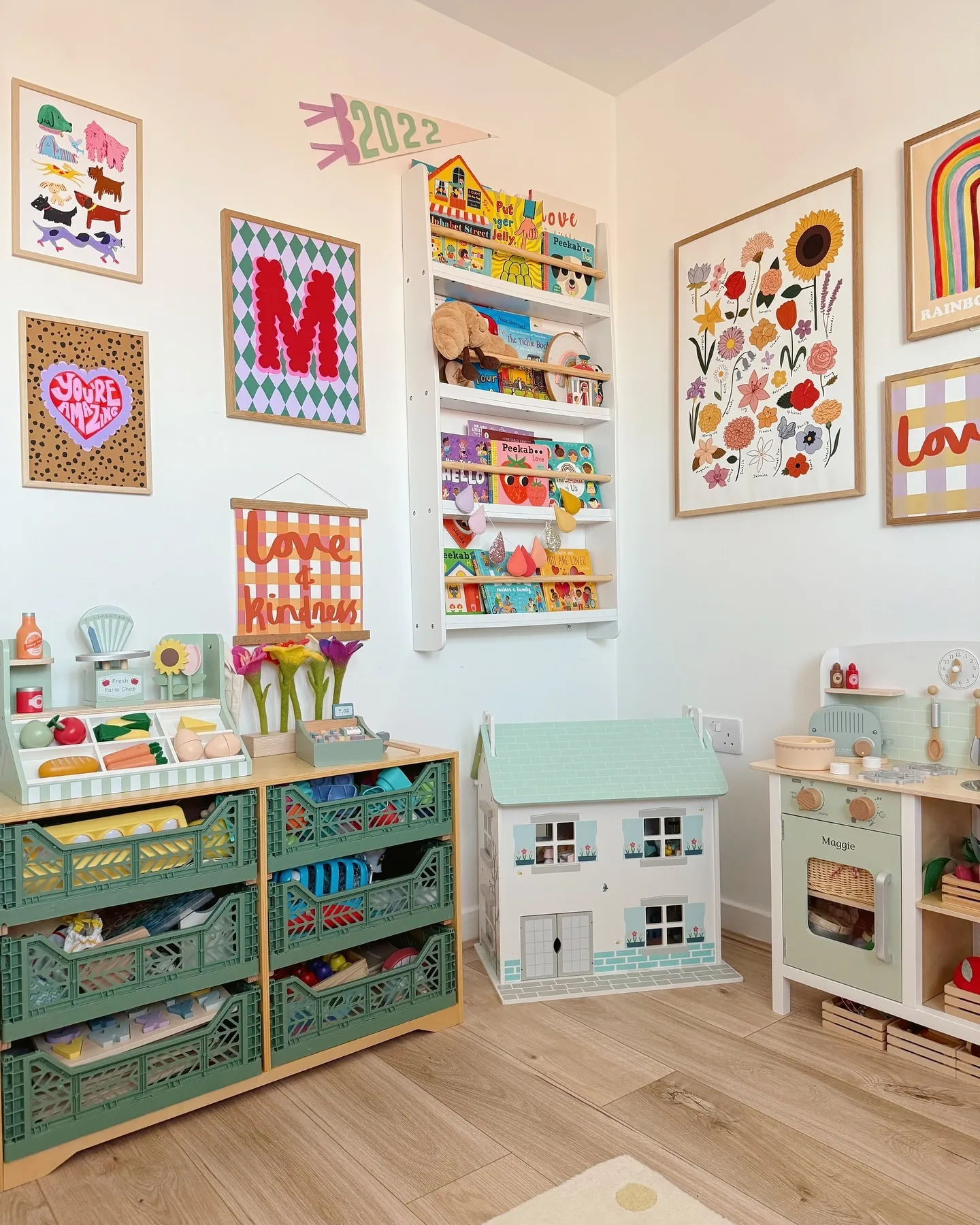
If your toddler’s bedroom is on the smaller side, fitting in a dedicated play area might seem tricky, but it’s absolutely possible with some smart layout choices. A well-designed bedroom play zone allows for independent play while keeping the rest of the room peaceful for sleep.
How to set it up:
- Use a small bookshelf or toy cubby to define the play area while keeping everything accessible.
- Keep large or noisy toys out of the bedroom to maintain a calming environment—focus on books, stuffed animals, puzzles, and quiet play activities.
- A simple floor play mat or a small teepee can create a fun spot without taking up too much space.
- If space is really tight, consider a loft bed (for older toddlers) with a play space underneath or use wall-mounted storage to free up floor space.
- Make cleanup easy by using labeled bins or a toy chest that matches the bedroom decor.
Pro tip: If your toddler shares a bedroom with a sibling, consider using a curtain or low bookshelf as a divider between the sleep and play zones. This helps separate playtime from bedtime, making it easier to wind down at night.
4. Along a Hallway Wall
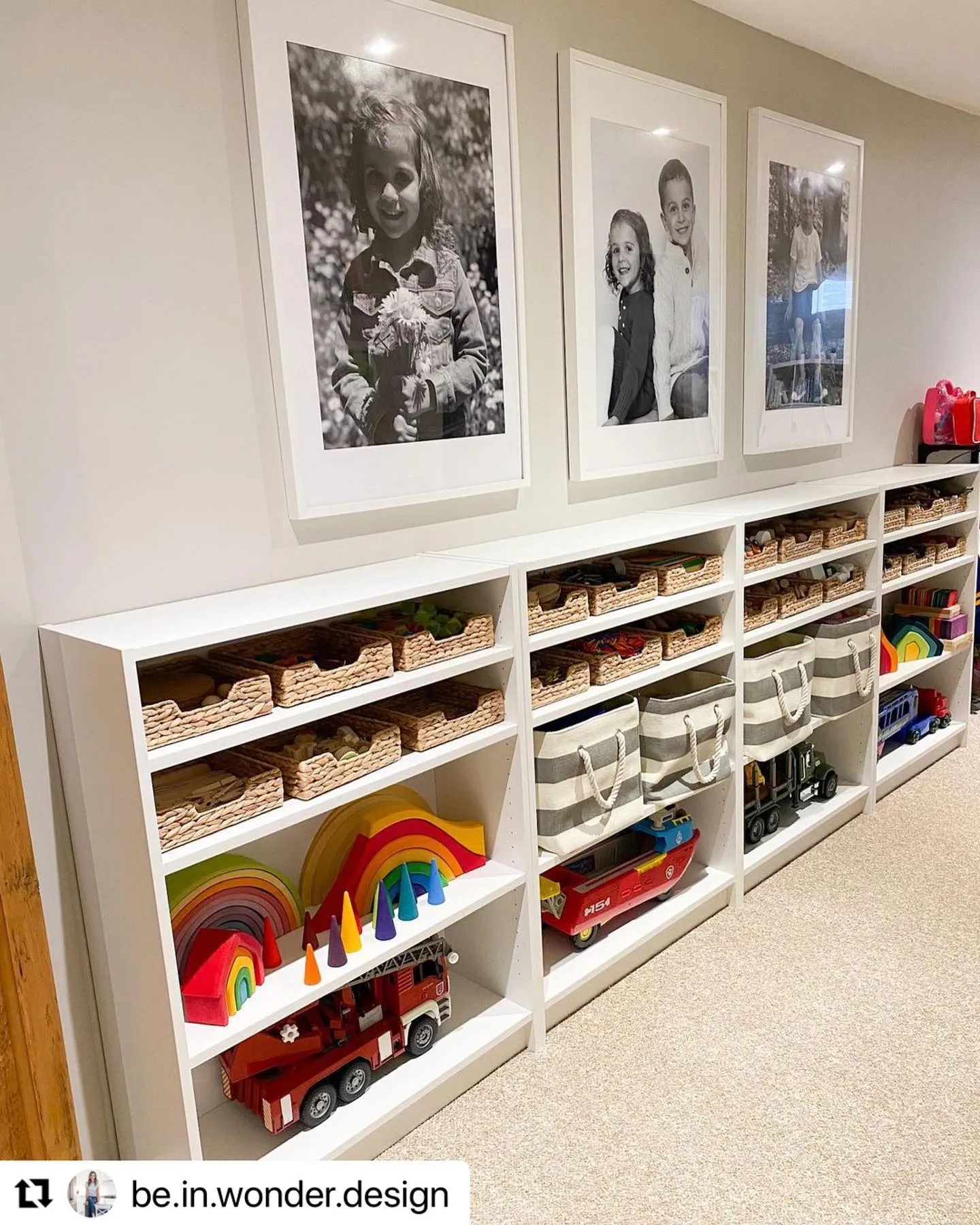
Hallways are often overlooked when it comes to functional space, but they can actually be a great spot for a mini playroom—especially if you’re short on square footage elsewhere. Even a narrow hallway can be transformed into a creative space with smart storage and vertical organization.
How to set it up:
- Install floating bookshelves or slim storage racks along the wall to hold books, puzzles, and small toys without taking up too much space.
- If your toddler loves drawing, add a wall-mounted chalkboard or whiteboard for creative play. You can also use peel-and-stick chalkboard decals for an easy, no-drill option.
- For an interactive element, create a magnetic or felt activity board where your toddler can play while passing by.
- Hang low wall hooks for dress-up costumes, small baskets for toy storage, or a tiny pegboard for toy organization.
- If space allows, place a fold-down desk or slim play table against the wall for coloring or sensory play.
Pro tip: If your hallway is a high-traffic area, make sure all storage is mounted securely to avoid anything getting knocked over. Soft storage bins or wall-mounted pouches can help keep things tidy without creating obstacles.
5. The Dining Room Nook
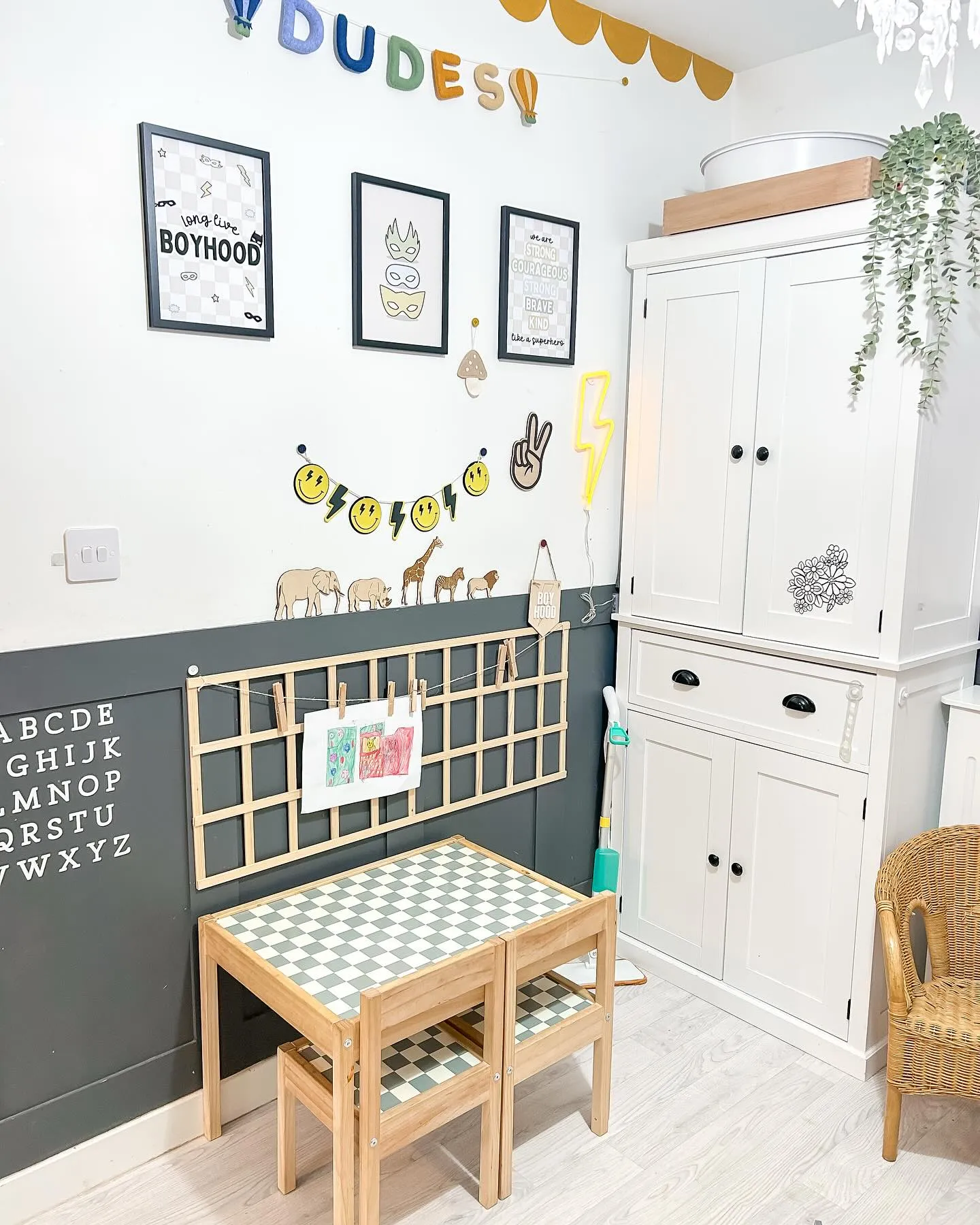
If your dining room has an unused corner, you can easily turn it into a toddler play area without sacrificing the functionality of the space. Since dining rooms already have a table and chairs, they naturally lend themselves to activities like arts and crafts, sensory play, and even small world play.
How to set it up:
- Use a small play table and toddler-friendly chairs to create a dedicated spot for drawing, puzzles, and pretend play.
- A rolling cart can store craft supplies, toys, or books, making it easy to move the play area when it’s time for family meals.
- Keep things organized with wall-mounted storage, like pegboards for hanging play kitchen utensils, bins for art supplies, or floating shelves for toys.
- If your toddler loves pretend play, a small play kitchen or market stand can fit neatly into a dining room corner.
- For easy clean-up, use wipeable mats or table covers to protect surfaces from spills and messes.
Pro tip: If your dining room is a shared space, choose storage options that blend well with your decor. Neutral-colored baskets, wooden shelving, or stylish storage ottomans can keep the space looking neat while still being functional for playtime.
6. A Closet Playroom
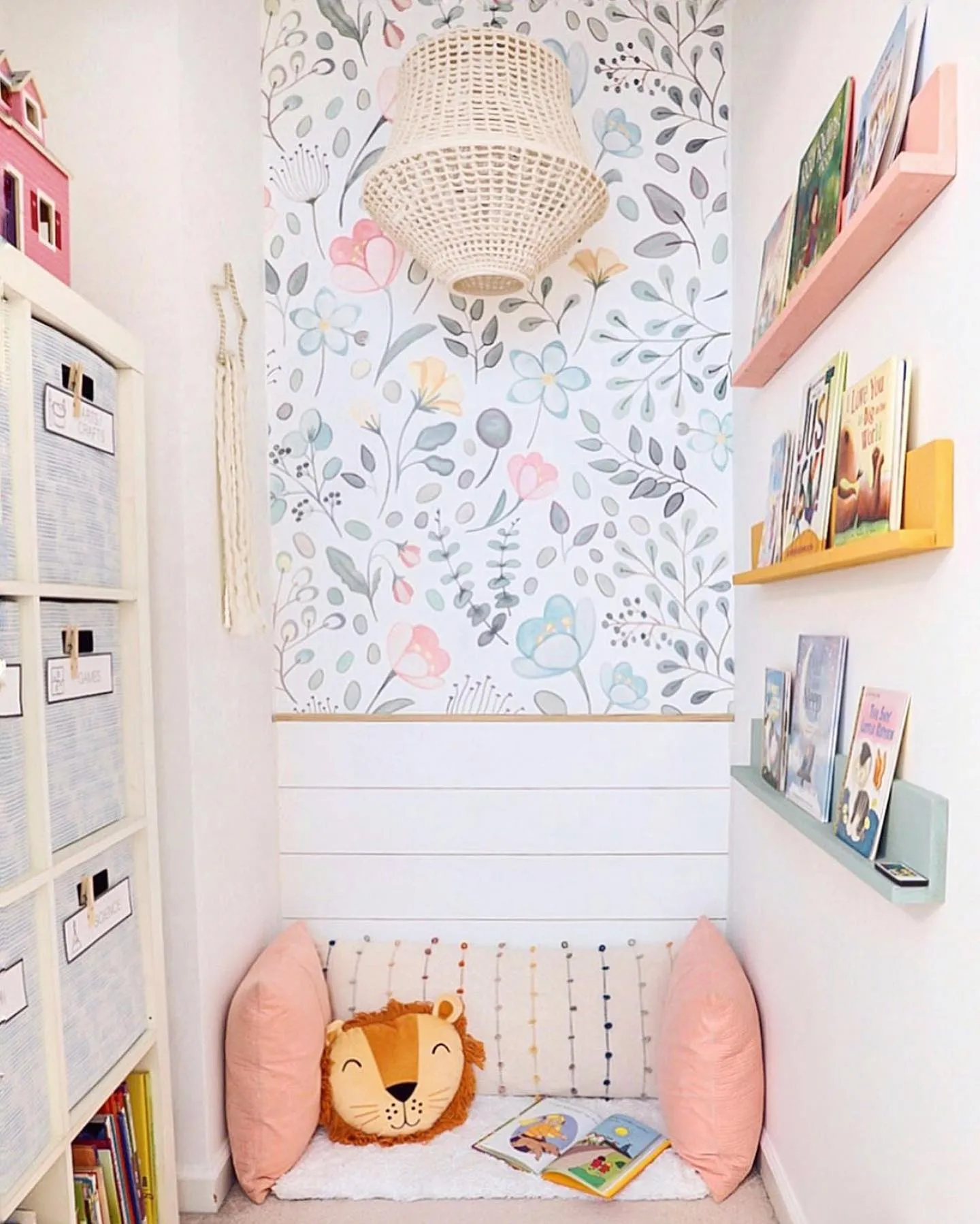
Have an extra closet or an underused wardrobe? Turn it into a tiny but magical playroom! A closet playroom is perfect for creating a cozy, contained space where your toddler can let their imagination run wild. Plus, when playtime is over, simply close the doors to keep everything out of sight.
How to set it up:
- Remove closet doors (if possible) to create an open, inviting space, or replace them with a soft curtain for a fun hideaway feel.
- Add a small bookshelf, cubbies, or bins to keep toys organized in a way that maximizes vertical space.
- Create a cozy reading nook by adding floor cushions, a bean bag, or a soft play mat.
- If your toddler loves pretend play, turn the closet into a mini house, spaceship, or fort by adding themed wall decals or a small canopy.
- For extra fun, install fairy lights or battery-powered LED strips to make the space feel magical.
Pro tip: If your closet is deep enough, install a low bench with storage bins underneath to create a seating area that also doubles as hidden toy storage.
➡️ This way to find out How to Create a Dreamy Reading Nook for Your Little Bookworm
7. A Section of the Home Office
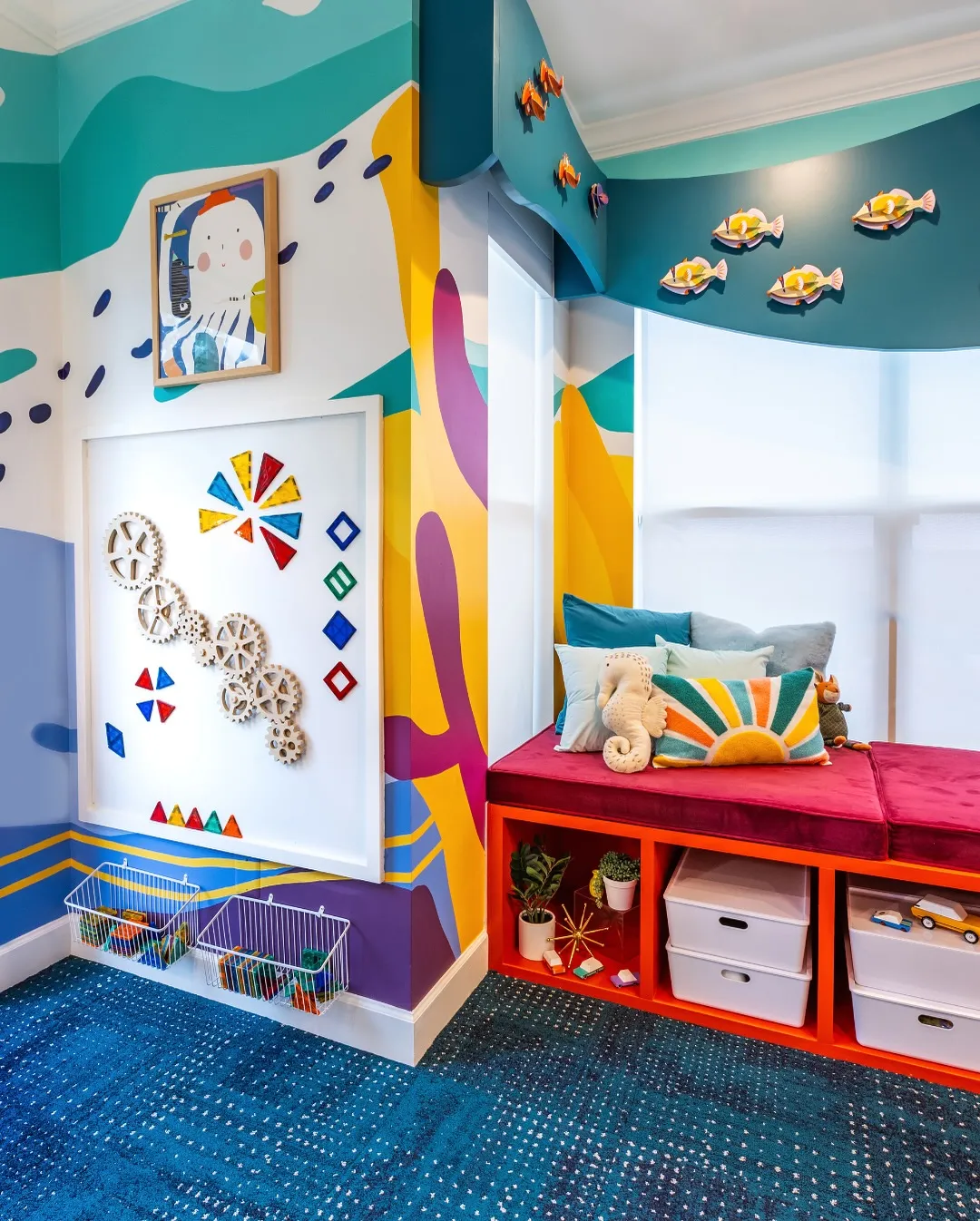
If you work from home or have a dedicated workspace, setting up a small play area in your home office can be a win-win. Your toddler gets a space to play while you work, and you can keep an eye on them without constant interruptions. The key is to make the space engaging enough to keep them entertained but organized enough that it doesn’t become distracting.
How to set it up:
- Dedicate a small corner with a toddler table and chair for quiet activities like coloring, puzzles, or sensory bins.
- Use a low shelf or storage cubes to keep toys and books organized without taking over your workspace.
- A quiet toy basket (filled with things like stacking blocks, busy boards, and felt puzzles) can keep them engaged while you work.
- If space allows, add a tiny pretend desk so they can “work” alongside you with a toy laptop, play phone, or little notepad.
- Keep messier activities like painting or Play-Doh on a rolling cart that can be stored away when not in use.
Pro tip: If you need your toddler to play independently, set up a rotating activity bin with different toys each day. New activities feel exciting and hold their attention longer, giving you more time to focus on work.
8. A Loft or Landing Space
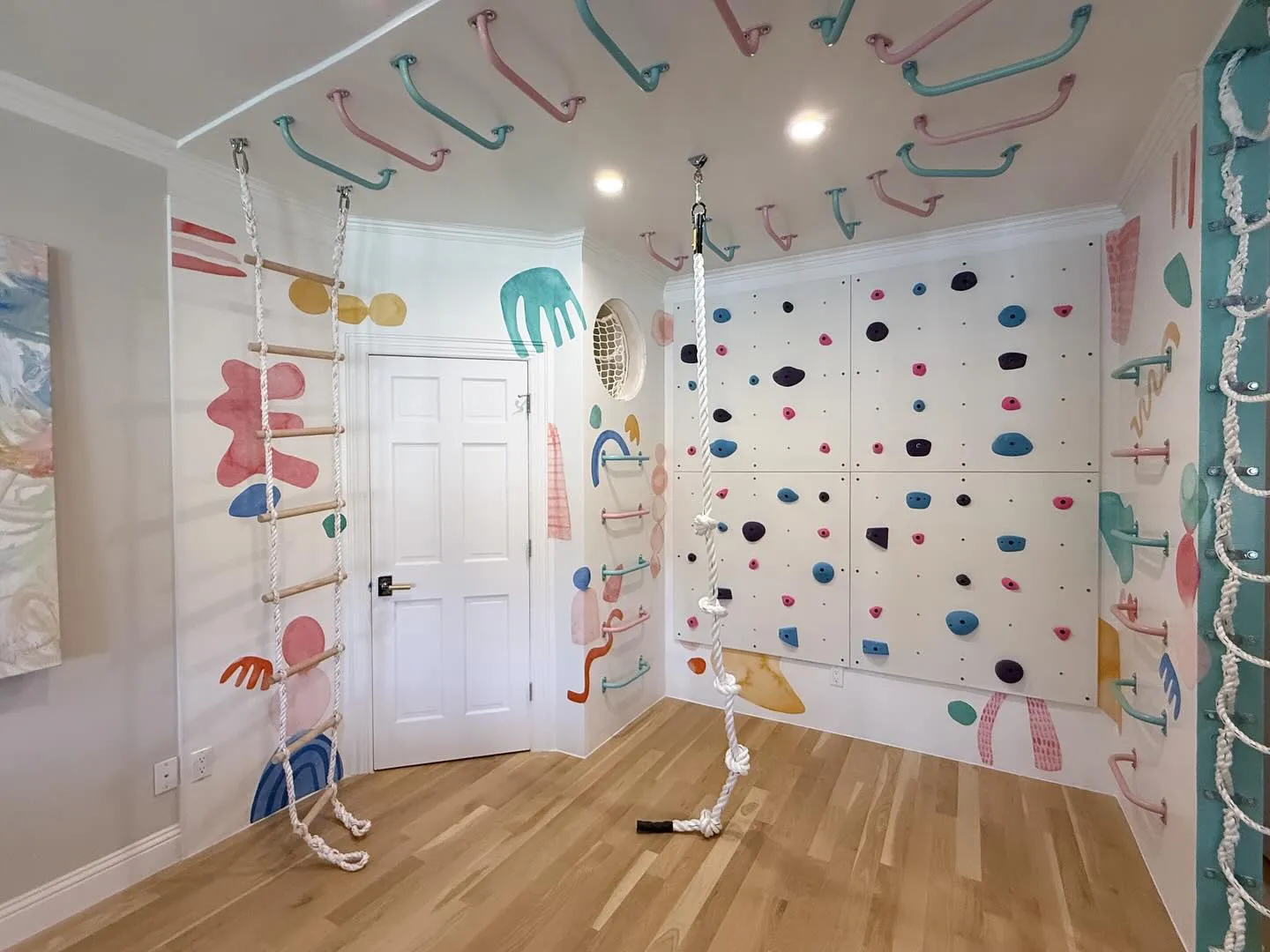
Lofts, upstairs landings, or even wide hallways often go unused, but they can be transformed into a cozy and functional toddler play area. Because these spaces are usually separate from the main living areas, they work well for play zones that don’t need to be cleaned up at the end of each day.
How to set it up:
- Add a soft play mat or rug to define the play area and create a comfortable spot for sitting and playing.
- Use low bookshelves, storage baskets, or a small cube organizer to keep toys neatly stored.
- If the space has a wall, hang a pegboard or floating shelves to hold small toys, puzzles, or art supplies.
- A foldable play tent or teepee is great for imaginative play and can be tucked away when not in use.
- If your toddler loves climbing, install a mini climbing frame, foam blocks, or a Pikler triangle for safe active play.
Pro tip: Lofts and landings can sometimes feel cold or impersonal—adding soft textures like cushions, curtains, or a cozy bean bag can help create a warm and inviting space.
9. An Entryway or Mudroom Corner
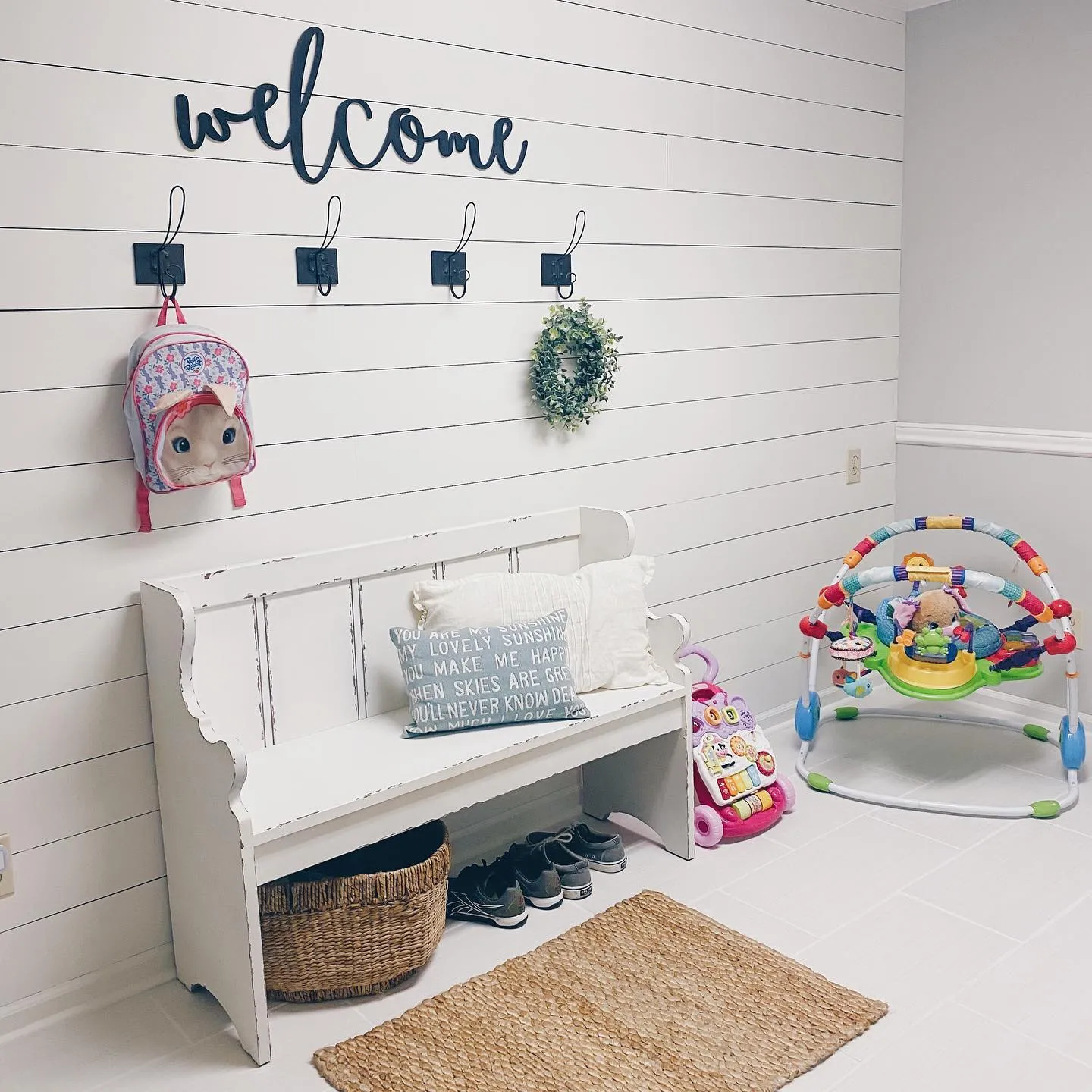
Your entryway or mudroom might not seem like an obvious playroom option, but with the right setup, it can be a convenient and fun spot for your toddler. Plus, having a play area near the door can help make transitions easier when heading out—giving them a fun distraction while you get shoes, coats, and bags ready.
How to set it up:
- Use cubbies, baskets, or a toy chest to store toys neatly while keeping them accessible.
- If you have built-in mudroom storage, designate a lower shelf or bench area as a mini play nook.
- Add a small chalkboard or magnetic board to the wall for doodling and interactive play.
- Hang hooks at toddler height for dress-up clothes, hats, or small backpacks to encourage independence.
- If there’s room, place a tiny table and chair for quick activities like sticker books, lacing cards, or small world play.
Pro tip: Since mudrooms and entryways see a lot of traffic, stick to contained and easy-to-clean activities like books, magnetic playsets, or felt boards.
Final Thoughts
A dedicated playroom is nice, but it’s not a must-have! With a little creativity, you can create a fun and functional play space in almost any room of your home. Whether it’s a cozy corner of the living room, an under-the-stairs hideout, or a section of your home office, the key is to keep it organized and flexible. With smart storage and a little planning, your toddler can have a special space for play—without toys taking over your whole house.

